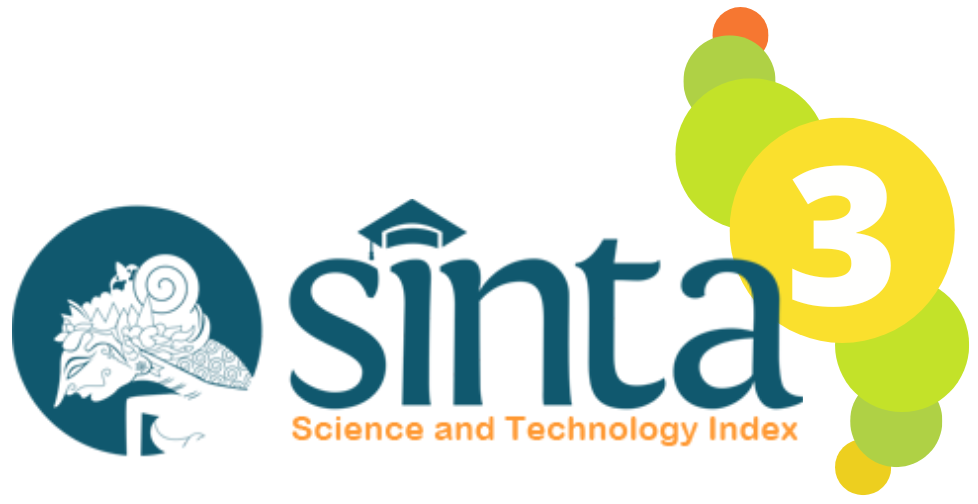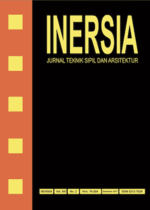Uji Durabilitas Bahan pada Elemen Balok Beton Bertulang Akibat Beban Statik di Lingkungan yang Merusak
DOI:
https://doi.org/10.21831/inersia.v12i2.12588Abstract
ABSTRACTConcrete structures reinforced with steel formed an important part of recent infrastructure. The combination of high strength properties on concrete and high tensile on steel provide an ideal composite material that offered wide application compare with other material on structural engineering. Buildings, bridges, piers, tanks and pipe, can be made from reinforced concrete. The aim of this research is to discover the durability of reinforced concrete beam on severe environment. This research conducted based on ASTM G-109 and Florida Test of Method FM 5-222. The method used on this research is DC Electrochemical Method with impressed current technique. The test conducted 120 days to gain beam flexural strength. The results show (1) there are two conditions on the beam, i.e.: (a) the beam is put based on compressive strength, and (b) the beam is put based on different salt content, (2) both conditions doesn't give much effect on beam flexural strength, (3) the beam increased as the time goes by and the increasing compressive strength, (4) the not-affected beam is suspected because un-perfect conditioning process, (5) the forced-corrosion process is not run well because the solution can't seep into the beam, (6) the gained flexural strength parameter is not depicted the condition of reinforced concrete on severe environment.Keywords: concrete beam, durability, severe environmentABSTRAK Struktur beton yang diperkuat dengan tulangan baja membentuk sebuah bagian yang penting dalam infrastruktur saat ini. Kombinasi sifat kuat tekan yang tinggi pada beton dan kuat tarik pada tulangan baja memberikan sebuah bahan komposit ideal yang menawarkan aplikasi yang lebih luas cakupannya dibandingkan dengan bahan-bahan lain pada bidang teknologi struktur sipil. Gedung-gedung, jembatan, tiang-tiang, tangki dan pipa, dapat dibuat dari bahan beton bertulang. Tujuan penelitian ini adalah untuk mengetahui durabilitas elemen struktur balok beton bertulang yang berada di lingkungan yang merusak. Penelitian ini dilaksanakan mengacu pada standar ASTM G-109 dan Florida Test of Method FM 5-522. Metode yang digunakan pada penelitian ini adalah DC Electrochemical Method dengan teknik arus paksa (impressed current). Pengujian dilaksanakan selama 120 hari, dengan data yang diambil adalah kuat lentur balok. Berdasarkan hasil penelitian tersebut dapat disimpulkan bahwa: (1) Terdapat dua pengkondisian uji terhadap balok beton bertulang, yakni (a) balok beton dikondisikan terhadap beda kuat desak, dan (b) balok beton dikondisikan dengan beda kadar garam air rendaman, (2) Dari kedua kondisi yang diberikan, perlakuan kondisi (a) maupun kondisi (b) tidak memberikan pengaruh terhadap kuat lentur balok beton, (3) Balok beton masih memberikan nilai kuat lentur yang meningkat sejalan dengan berjalannya waktu dan dengan kenaikan kuat desaknya, (4) Tidak terpengaruhnya balok beton pada kedua kondisi yang diberikan diduga disebabkan karena proses pengkondisian yang tidak terjadi dengan sempurna, sehingga proses yang diharapkan terjadi tidak berjalan sebagaimana mestinya, (5) Proses korosi paksa tidak dapat berjalan dengan baik karena larutan penghantar tidak dapat masuk/merambat ke dalam beton, (6) Parameter kuat lentur yang diperoleh belum mencerminkan kondisi struktur beton yang berada di lingkungan yang merusak.Kata kunci: balok beton, durabilitas, lingkungan yang merusakDownloads
Published
2017-01-16
How to Cite
Pramudiyanto, P., Manap, A., & Prapto, P. (2017). Uji Durabilitas Bahan pada Elemen Balok Beton Bertulang Akibat Beban Statik di Lingkungan yang Merusak. INERSIA Lnformasi Dan Ekspose Hasil Riset Teknik Sipil Dan Arsitektur, 12(2), 133–139. https://doi.org/10.21831/inersia.v12i2.12588
Issue
Section
Articles
License
Authors who publish with INERSIA journal agree to the following terms:
- Authors retain copyright and grant the INERSIA journal right of first publication with the work simultaneously licensed under Creative Commons Attribution License (CC BY 4.0) that allows others to share the work with an acknowledgment of the work's authorship and initial publication in this journal.
- Authors can enter into separate, additional contractual arrangements for the non-exclusive distribution of the published version of the work (e.g., post it to an institutional repository or edit it in a book), with an acknowledgment of its initial publication in this journal.
- Authors are permitted and encouraged to post their work online (e.g., in institutional repositories or on their website) before and during the submission process, as it can lead to productive exchanges, as well as earlier and greater citation of published work.

INERSIA by https://journal.uny.ac.id/index.php/inersia was distributed under a Creative Commons Attribution 4.0 International License










